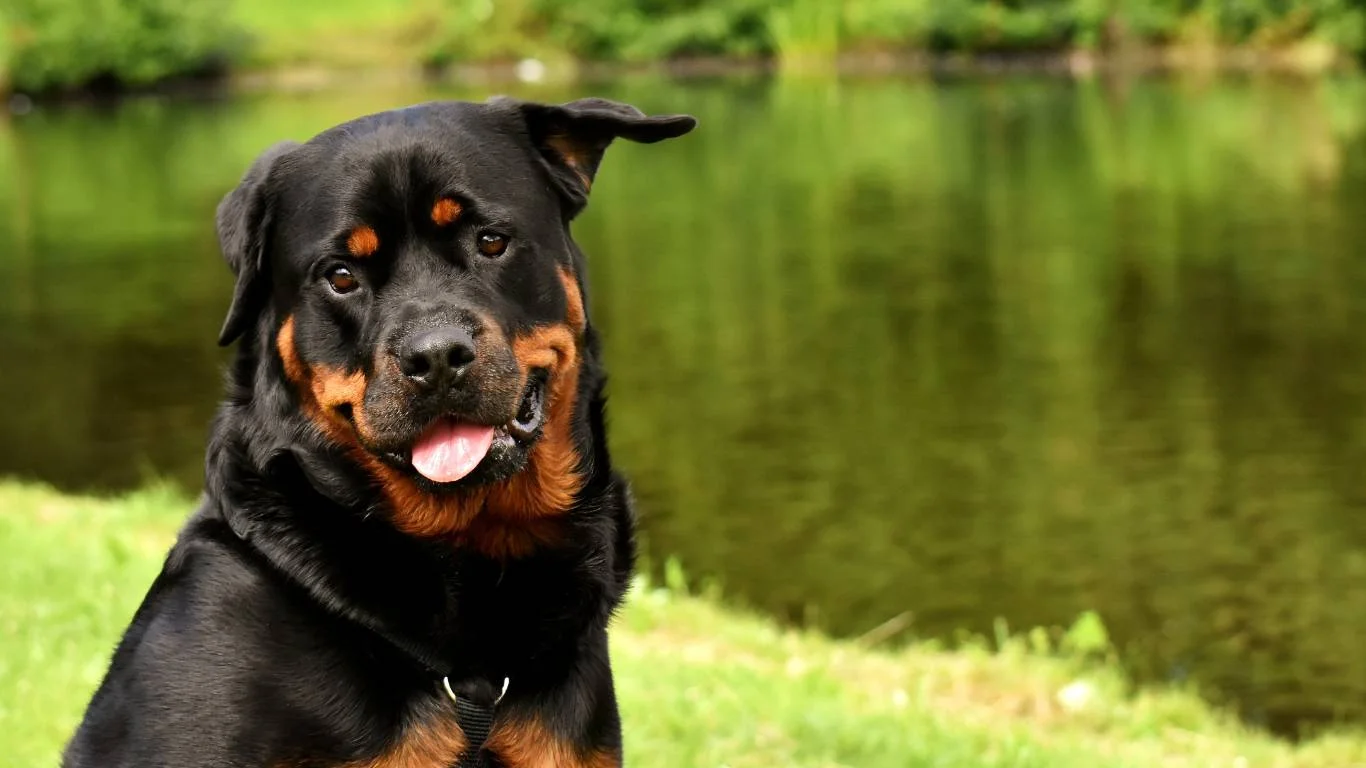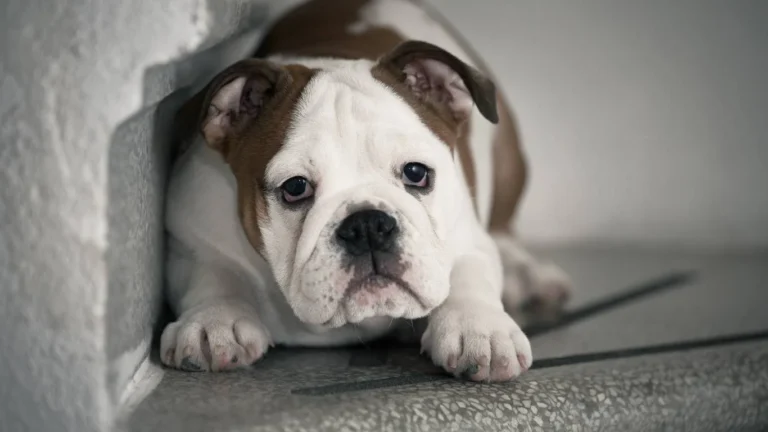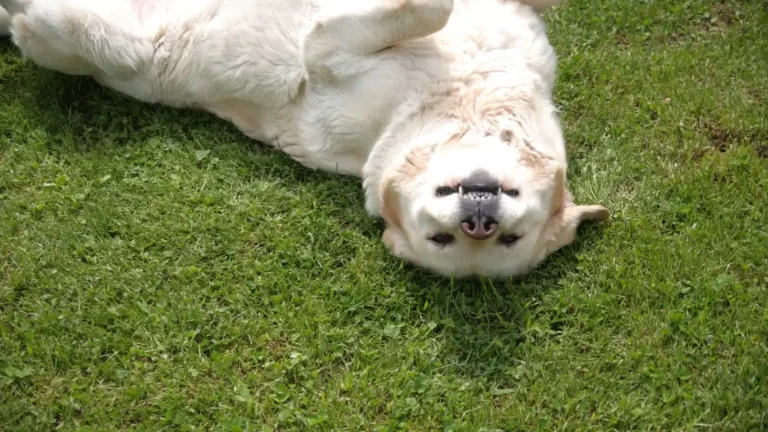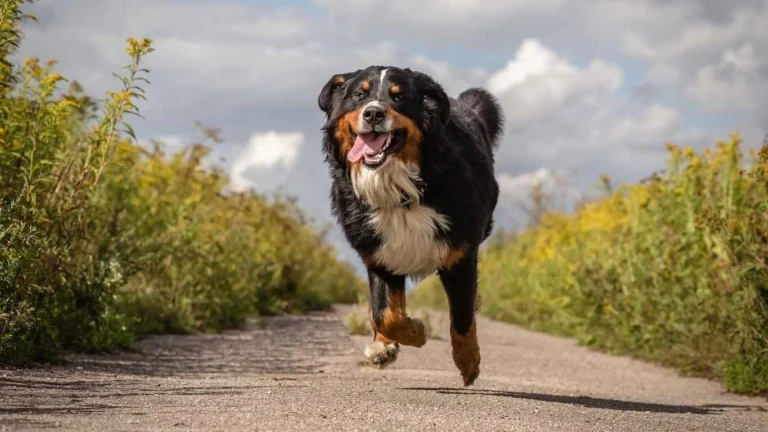What Does It Mean If A Dog’s Tail Is Limp? – Causes & Solutions
If you’ve ever noticed your dog walking around with a limp tail or even a completely floppy one, you’re probably wondering, “What does it mean if a dog’s tail is limp?” This might be more common than you’d think, and while it can sometimes be a simple issue that resolves on its own, it could also be a sign of something more serious. As a veterinary assistant with a focus on pet nutrition, I’ve seen plenty of cases where a dog’s tail goes limp, and it’s always important to address the situation to ensure your furry friend’s health and well-being. In this article, we’ll dive into the reasons why your dog’s tail might become limp, what it means, and how you can help your pup feel better.
Why Is My Dog’s Tail Limp? Understanding the Causes

When a dog’s tail goes limp, it’s usually an indication of something that needs attention. But before you jump to conclusions, let’s break down a few of the more common causes, and what they might mean for your pet. Keep in mind, though, that if your dog’s tail stays limp for an extended period or if your dog is showing other signs of discomfort, you should consult with your vet to get an accurate diagnosis.
1. Injury or Trauma
The first thing that may come to mind when you see a limp tail is that your dog might have suffered some sort of injury. Just like any other part of their body, the tail is susceptible to sprains, strains, or even fractures, especially if they’ve been playing rough, running around, or had a mishap during their usual activities. A sudden jolt, tug, or fall could cause the muscles or bones in their tail to become injured.
When this happens, you might notice your dog holding their tail in a lowered or even completely drooping position. If there is a fracture, there could be swelling or pain around the tail area, and your dog might avoid touching or wagging it. If you suspect your dog has suffered an injury, it’s crucial to get them checked by your vet to prevent further damage and to make sure that the injury heals properly.
2. Limp Tail Due to Anxiety or Stress
Another reason you might see a limp tail is if your dog is feeling anxious or stressed. Dogs are incredibly sensitive to changes in their environment, and if they’re feeling fearful or nervous, they may drop their tail. This is more common during situations that are new or unfamiliar to them, such as a trip to the vet, moving to a new home, or even when they hear loud noises like thunderstorms or fireworks. Anxiety can also cause their body language to change, and you might notice them becoming more subdued or hiding in a corner.
If your dog’s limp tail is associated with nervous behavior, try to calm them with familiar toys, treats, or comfort items. Over time, as they become more accustomed to certain stressors, their tail may begin to return to normal. However, if anxiety becomes a chronic issue, it may be time to look into behavioral therapy or consult your vet about calming products or medications.
How Do You Know if It’s Something More Serious?

As I’ve learned from my experience as a veterinary assistant, there are some situations when a limp tail is more than just a minor issue. If the limpness is accompanied by other symptoms, it’s a good idea to seek professional help as soon as possible. So, let’s take a closer look at when you should be extra concerned and what signs to watch for.
1. Severe Pain and Tenderness
If your dog’s tail is limp but they’re also reacting with pain when you touch it, there’s a chance they might have suffered a more severe injury, such as a tail fracture or dislocation. Severe pain is often indicated by whining, growling, or trying to pull away when the area is touched. If this happens, avoid handling their tail too much, as this could make things worse, and get to the vet right away.
2. Swelling, Redness, or Heat
Another concerning sign is if the tail area is swollen, red, or unusually warm to the touch. This could indicate an infection or inflammation, which can occur when the tail is injured, especially if there’s an open wound or bite. Infections can spread quickly, so early intervention is key to avoid further complications. If you notice these symptoms, don’t wait for things to get worse—book an appointment with your vet immediately.
3. Paralysis or Inability to Move the Tail
If your dog can’t move their tail at all or it’s hanging completely limp and immobile, this could be a sign of nerve damage or a neurological issue. Conditions such as Intervertebral Disc Disease (IVDD) or nerve damage due to trauma can result in a loss of tail movement. These issues often require more advanced medical treatment, including possible surgery, so it’s best not to delay professional care in these cases.
What to Do if Your Dog’s Tail is Limp

So, what should you do if you notice your dog’s tail going limp? The first step is to assess the situation calmly. Take note of any other symptoms your dog is displaying, such as pain, swelling, or behavioral changes. If your dog is still acting normal aside from the limp tail, you may be able to monitor the situation at home for a little while. But if you’re concerned or if the limp tail is persistent, it’s always a good idea to consult your vet.
In cases of minor injury or stress, your vet might recommend a few days of rest, ice or heat therapy, and possibly some anti-inflammatory medication. If the problem is more severe, your dog may need imaging tests, such as X-rays, to determine the cause. For nerve-related issues, further investigation may be needed to decide the best course of treatment.
Can Nutrition Play a Role in a Limp Tail?

As someone who specializes in pet nutrition, I can’t stress enough how much what your dog eats can affect their overall health, including their tail’s well-being. A limp tail can sometimes be linked to deficiencies in key nutrients that help support a dog’s nervous system and muscle function. For instance, a lack of certain vitamins or minerals, such as calcium or vitamin B12, can contribute to issues like weakness or muscle control problems, which might be noticeable in their tail.
If your dog’s tail suddenly goes limp without any obvious cause, it’s worth considering whether their diet is providing all the necessary nutrients for optimal health. For example, dogs with chronic deficiencies in essential fatty acids might experience muscle weakness, which could extend to their tails. Additionally, poor bone health due to inadequate calcium intake can result in bone fragility, leading to injuries or weakness that might manifest in a limp tail.
What to Look for in a Healthy Diet
In my time as a veterinary assistant, I’ve seen dogs with limp tails who were missing key nutrients in their diets. A balanced diet plays a huge role in maintaining strong muscles, healthy joints, and good nerve function—all of which are crucial for a dog’s ability to move their tail freely. To avoid nutritional deficiencies, look for dog food that lists high-quality protein sources like chicken, beef, or fish, and includes healthy fats like Omega-3 fatty acids.
Also, consider the overall health of your dog’s digestive system, as nutrient absorption starts in the gut. If your dog has digestive issues or food sensitivities, they may not be getting the full benefit of their food, even if it seems balanced. Supplements like glucosamine for joint health or B vitamins for nerve function could help support your dog’s tail and overall vitality. I’d always recommend speaking with your vet before introducing new supplements or making changes to your dog’s diet, though.
How to Treat a Limp Tail Based on the Cause

Now that we’ve covered some common causes of a limp tail, let’s dive into how you can treat this issue based on its origin. Whether it’s an injury, a stress response, or something else, addressing the root cause is the first step to helping your dog feel better and get their tail wagging again. Below, I’ll break down the approaches for a few different scenarios based on my experience working in the vet field.
1. Limp Tail Due to Injury
If your dog has suffered an injury that’s led to a limp tail, the treatment will depend on the severity of the damage. For mild injuries, your vet may recommend rest and restricted activity. In these cases, it’s important to keep your dog from running or jumping, as this could aggravate the injury. Ice packs or cold compresses can help reduce swelling during the first 48 hours following the injury. I’ve found that many owners find success in using soft bedding to encourage rest while also limiting activity.
If the injury is more severe, such as a tail fracture or muscle tear, your dog may need more intensive treatment, including pain management or even surgery. Fractures, particularly in the tail bones, can take time to heal, and your vet might advise you on how to make your dog as comfortable as possible during recovery. A limp tail due to injury should gradually improve as the tissues heal, but make sure to follow your vet’s instructions carefully for the best outcome.
2. Limp Tail Due to Anxiety or Stress
If your dog’s limp tail is a result of stress or anxiety, treatment often involves creating a calm, safe environment for them. It’s crucial to figure out what might be causing your dog’s anxiety and try to address it. For example, if your dog gets nervous during thunderstorms, you might want to try calming aids like pheromone diffusers or even consult your vet about anti-anxiety medications that could help alleviate their stress.
In my experience, positive reinforcement training can also work wonders in reducing anxiety over time. You can gradually expose your dog to the anxiety-inducing situation in a controlled way, offering treats and praise to reward calm behavior. If the anxiety is more severe, your vet might suggest behavioral therapy or medications to help manage the stress more effectively.
3. Limp Tail Due to Nutritional Deficiencies
If you suspect that your dog’s limp tail is related to a nutritional deficiency, your first step should be to assess their diet and make sure they’re getting a well-balanced, high-quality food. If their diet is lacking essential vitamins, minerals, or fatty acids, you might need to switch to a more nutrient-dense food or incorporate supplements under your vet’s guidance. As I mentioned earlier, certain nutrients like Omega-3 fatty acids, calcium, and B vitamins can support muscle and nerve health, potentially alleviating the limp tail.
However, it’s important not to make drastic changes to your dog’s diet without consulting your vet. In some cases, a blood test or other diagnostic tools may be necessary to determine whether there’s a deficiency or other underlying health issue. If you suspect a specific deficiency, talk to your vet about the best course of action to ensure that your dog’s nutritional needs are being met and that their tail will start to improve.
When to See a Veterinarian for Limp Tail

While many cases of a limp tail are temporary and resolve with time, there are certain signs that indicate you should get your dog checked by a vet. If your dog’s tail is limp and they’re experiencing pain, swelling, or difficulty moving, it’s always better to err on the side of caution and seek veterinary attention. Similarly, if your dog’s limp tail is accompanied by other concerning symptoms such as loss of appetite, lethargy, or behavioral changes, it’s time to schedule a visit to the clinic.
As a veterinary assistant, I’ve seen firsthand how early intervention can make all the difference. Even if the limp tail seems minor at first, getting your dog checked early can help prevent more serious problems down the road. Plus, your vet will be able to provide the appropriate treatment and guidance to help your dog get back to their happy, tail-wagging self.
Preventing Limp Tail: Tips for Keeping Your Dog’s Tail Healthy

As a veterinary assistant with a focus on pet nutrition, I’ve often been asked about how to prevent a limp tail from happening in the first place. While some causes of a limp tail can be unavoidable, there are several steps you can take to reduce the chances of your dog experiencing this issue. Prevention starts with a healthy lifestyle, which includes proper exercise, good nutrition, and regular vet checkups. In this section, I’ll share a few tips that I’ve learned over the years to help keep your dog’s tail—and the rest of their body—in tip-top shape.
1. Regular Exercise and Activity
Exercise is one of the most important factors in maintaining your dog’s overall health. Regular physical activity not only helps to keep their muscles and bones strong but also improves flexibility, balance, and coordination—crucial for their tail’s mobility. It’s important to ensure your dog gets the right amount of exercise based on their age, breed, and health. For example, high-energy breeds like Border Collies or Labrador Retrievers will need more intense physical activity, while older dogs or smaller breeds might need gentler exercises.
In my experience, regular walks, play sessions, and even a little bit of mental stimulation (think puzzle toys) can help ensure your dog stays physically and mentally fit. Be sure to keep an eye on your dog during play to avoid any accidents or injuries, especially if they tend to get a bit overzealous when chasing after toys or running around. If your dog’s tail becomes limp after an intense play session, it could be a sign that they’ve overexerted themselves, so make sure they have time to rest and recover between active periods.
2. Proper Nutrition
As I mentioned earlier, nutrition plays a significant role in your dog’s overall health, including the health of their tail. Ensuring they have a well-balanced diet that includes all the essential nutrients can prevent deficiencies that could lead to weakness or muscle problems that affect their tail. A balanced diet includes high-quality protein, healthy fats, and the right mix of vitamins and minerals. Be sure to select dog food with high-quality ingredients, and look for foods that contain essential nutrients like Omega-3 fatty acids for muscle health and calcium for strong bones.
Regularly scheduled vet visits will help catch any nutritional deficiencies early on. Your vet can assess your dog’s diet and offer guidance on supplements if needed. If your dog has any food allergies or sensitivities, addressing these through an elimination diet or a special prescription food could make a big difference in their overall health and help prevent any tail-related issues in the future.
3. Safe Playtime
While exercise is key, so is ensuring that your dog’s playtime is safe. Rough play can sometimes lead to accidental tail injuries, especially in overly excited dogs who get carried away during games. My advice is to supervise play sessions and ensure the environment is safe. If you’re playing fetch or tug-of-war, make sure that the area is free from hazards, and avoid overly rough interactions that could result in a tail injury. If your dog enjoys chasing after balls or other toys, make sure they’re running in a safe, enclosed space to avoid potential collisions with obstacles or other animals.
4. Regular Vet Checkups
Just like humans, dogs need regular checkups to ensure they’re staying healthy. Scheduling routine veterinary exams is crucial for catching potential issues before they become major problems. These checkups will allow your vet to evaluate your dog’s overall health, including their joints, muscles, and tail. A vet can also give you advice on how to spot signs of injury or illness early on, which could help prevent a limp tail from developing. If your dog has any chronic conditions like arthritis, your vet will be able to recommend treatments that could help maintain their quality of life and prevent mobility issues in their tail and other parts of their body.
Additionally, your vet will help you stay on top of vaccinations and flea/tick preventatives, which can prevent conditions that might contribute to a limp tail, like infections or nervous system issues. Don’t skip those annual checkups—they’re essential for your dog’s health and wellbeing!
When Should You Be Concerned About a Limp Tail?

While most cases of limp tails are relatively harmless and will resolve with some rest, there are certain situations where you should seek veterinary attention immediately. In some cases, a limp tail can be indicative of a more serious underlying issue, and it’s important to err on the side of caution. So, when should you be concerned? Here are a few red flags to watch out for:
1. Persistent Limp Tail
If your dog’s tail remains limp for more than a few days, or if you notice that they’re not regaining full mobility, it’s time to consult your vet. A limp tail that doesn’t improve might indicate an underlying issue such as nerve damage, injury, or even an infection. In these cases, further testing, like X-rays or blood work, may be necessary to get a clear diagnosis.
2. Pain or Swelling
If your dog seems to be in pain, or if you notice swelling or heat in the tail area, don’t wait for the condition to improve on its own. Pain, swelling, or redness can be signs of infection, injury, or inflammation that require immediate attention. This could also be a sign of a more serious condition, such as a fracture, which may need medical treatment like pain relief, splinting, or even surgery.
3. Other Symptoms
If your dog is showing other signs of illness—such as lethargy, loss of appetite, vomiting, or changes in behavior—along with a limp tail, this could point to a more serious health concern. It’s always best to get your dog evaluated by a vet to rule out any potentially life-threatening conditions. Early intervention can prevent complications and get your dog back to their normal, happy self as quickly as possible.
References
If you’re looking for more information about dog health, I recommend checking out some trusted sources like The American Kennel Club for breed-specific information, or PetMD for general pet health topics. For information about nutrition and diet, the Academy of Nutrition and Dietetics offers helpful insights on the role of diet in animal health. Additionally, The National Institutes of Health is an excellent resource for research into various health conditions.
Disclaimer
While the information provided here is based on my experience as a veterinary assistant with a focus on pet nutrition, it’s important to remember that every dog is unique, and their health needs can vary. Always consult with a qualified veterinarian for personalized advice and treatment options. The tips and guidelines in this article are intended for general informational purposes only and should not replace professional medical advice.






